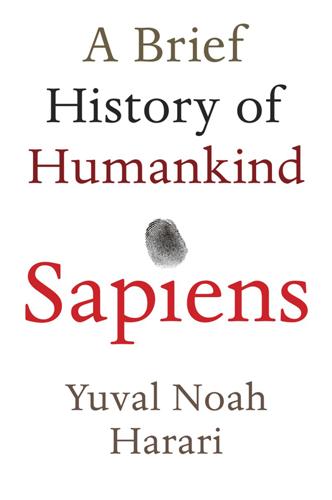
Sapiens: A Brief History of Humankind
by
Yuval Noah Harari
Published 1 Jan 2011
Nobody saw their real potential. A partial breakthrough in converting heat into movement followed the invention of gunpowder in ninth-century China. At first, the idea of using gunpowder to propel projectiles was so counter-intuitive that for centuries gunpowder was used primarily to produce fire bombs. But eventually – perhaps after some bomb expert ground gunpowder in a mortar only to have the pestle shoot out with force – guns made their appearance. About 600 years passed between the invention of gunpowder and the development of effective artillery. Even then, the idea of converting heat into motion remained so counter-intuitive that another three centuries went by before people invented the next machine that used heat to move things around.
…
In fact, the Chinese used the new compound mainly for firecrackers. Even as the Song Empire collapsed in the face of a Mongol invasion, no emperor set up a medieval Manhattan Project to save the empire by inventing a doomsday weapon. Only in the fifteenth century – about 600 years after the invention of gunpowder – did cannons become a decisive factor on Afro-Asian battlefields. Why did it take so long for the deadly potential of this substance to be put to military use? Because it appeared at a time when neither kings, scholars, nor merchants thought that new military technology could save them or make them rich.
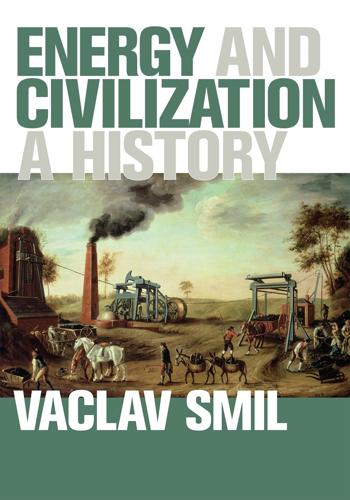
Energy and Civilization: A History
by
Vaclav Smil
Published 11 May 2017
All historical conflicts have been fought with weapons, but weapons are not the prime movers of war: two exceptions aside, until the invention of gunpowder the only prime movers of wars were human and animal muscles. The first exception was the use of incendiary materials; the second, of course, was the use of wind-powered sails to speed up and facilitate naval maneuvers. Traditional mechanical weapons—handheld (daggers, swords, lances) and projectile (spears, arrows, heavy weights discharged by catapults and trebuchets)—were designed to maximize physical damage through the sudden release of kinetic energy. Only the invention of gunpowder introduced a new, and much more powerful, prime mover.
…
The aspiration to emulate their destructive power recurs in many narratives and fantasies (Lindsay 1975). But for millennia the only pale imitation was to attach incendiary materials to arrowheads, or to hurl them in containers from catapults. Sulfur, petroleum, asphalt, and quicklime were used in these incendiary mixtures. Only the invention of gunpowder combined the propulsive force with great explosive and inflammatory power. Animate Power Animate energies remained the most important prime mover for most of humanity until the middle of the twentieth century. Their limited power, circumscribed by the metabolic requirements and mechanical properties of animal and human bodies, restricted the reach of preindustrial civilizations.

Modern China: A Very Short Introduction
by
Rana Mitter
Published 25 Feb 2016
China is a profoundly modern society; but the way in which its modernity has been manifested is indelibly shaped by the legacy of its premodern (a term preferable to ‘traditional’) past. Not that the premodern past was ever monolithic or static: China changed immeasurably over hundreds of years, developing a bureaucracy, science, and technology (the invention of gunpowder, clocks, and the compass), a highly commercialized economy (from around 1000 onwards), and a diverse syncretic religious culture. The similarity in many developments in Europe and China in the period 1000 to around 1800 should not, however, conceal the fact that imperial China and early modern Europe also differed widely in their assumptions and mindsets.
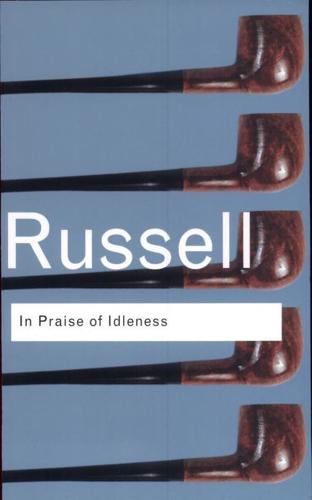
In Praise of Idleness and Other Essays
by
Bertrand Russell
Published 1 Jan 1935
But by the help of firearms and gunpowder, which were brought to Japan by the ships that brought the Christian missionaries, the Shogun established internal peace; and since 1868, by means of education and the Shinto religion, the Japanese Government has succeeded in producing a nation as homogeneous and resolute and united as any nation of the West. The greater degree of social cohesion of the modern world is very largely due to changes in the art of war, all of which, from the invention of gunpowder onwards, have tended to increase the power of Governments. This process is probably by no means ended, but it has become complicated by a new factor: as armed forces become increasingly dependent upon industrial workers for their muni- tions, it becomes increasingly necessary for Governments to secure the support of large sections of the population.
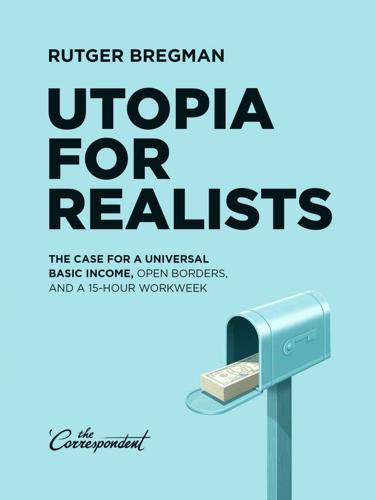
Utopia for Realists: The Case for a Universal Basic Income, Open Borders, and a 15-Hour Workweek
by
Rutger Bregman
Published 13 Sep 2014
Indeed, ever more countries are arriving in the “Land of Plenty,” at the top right of the diagram, where the average income now tops $20,000 and life expectancy is over 75. Source: Gapminder.org Historians estimate that the average annual income in Italy around the year 1300 was roughly $1,600. Some 600 years later – after Columbus, Galileo, Newton, the scientific revolution, the Reformation and the Enlightenment, the invention of gunpowder, printing, and the steam engine – it was… still $1,600.3 Six hundred years of civilization, and the average Italian was pretty much where he’d always been. It was not until about 1880, right around the time Alexander Graham Bell invented the telephone, Thomas Edison patented his lightbulb, Carl Benz was tinkering with his first car, and Josephine Cochrane was ruminating on what may just be the most brilliant idea ever – the dishwasher – that our Italian peasant got swept up in the march of progress.
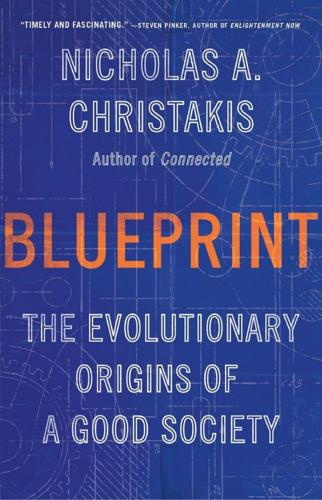
Blueprint: The Evolutionary Origins of a Good Society
by
Nicholas A. Christakis
Published 26 Mar 2019
Stones in men’s hands superseded teeth in their mouths. This is known as the weapons-replacement hypothesis. But the reduction in male canine size predates the appearance of tools in the fossil record.13 And larger size and bigger teeth could still be useful in fighting even after weapons became available (at least until the invention of gunpowder, which radically equalized all people regardless of size).14 These observations suggest that the maintenance of upper-body dimorphism in humans—despite the reduction in dimorphism in other traits, like teeth—may not be entirely explained by direct male competition. So what else might explain it?
…
P. van Schaik, “Intrasexual Competition and Body Weight Dimorphism in Anthropoid Primates,” American Journal of Physical Anthropology 103 (1997): 37–68. 14. In a letter from Thomas Jefferson to John Adams, dated October 28, 1813, Jefferson also notes this: “Formerly, bodily powers gave place among the aristoi. But since the invention of gunpowder has armed the weak as well as the strong with missile death, bodily strength, like beauty, good humor, politeness and other accomplishments, has become but an auxiliary ground of distinction.” The Adams-Jefferson Letters: The Complete Correspondence Between Thomas Jefferson and Abigail and John Adams, ed.
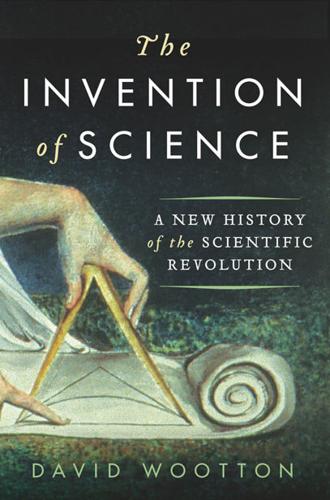
The Invention of Science: A New History of the Scientific Revolution
by
David Wootton
Published 7 Dec 2015
It is this sort of revolution, a revolution of unintended consequences and unforeseen outcomes, that Butterfield intended to evoke by the term ‘the Scientific Revolution’. If we define the term ‘revolution’ narrowly as an abrupt transformation that affects everybody at the same time, there is no Scientific Revolution – and no Neolithic Revolution, or Military Revolution (following the invention of gunpowder), or Industrial Revolution (following the invention of the steam engine) either. But we need to acknowledge the existence of extended, patchy revolutions if we want to turn aside from politics and understand large-scale economic, social, intellectual and technological change. Who, for example, would object to the term ‘the digital revolution’ on the grounds that it is not a singular and discrete event, localized in time and space?
…
To get a sense of its resilience one need only think of Machiavelli, almost a hundred years later, who opens the Discourses on Livy (c.1517) with a reference to the (relatively recent) discovery of the New World and a promise that he, too, has something new to offer, only to turn sharply and insist that in politics, as in law and medicine, all that is required is a faithful adherence to the examples left by the ancients, so that it turns out that what he has to offer is not a voyage into the unknown but a commentary on Livy. Unsurprisingly, Machiavelli thought it perfectly obvious that, despite the invention of gunpowder, Roman military tactics remained the model that all should follow: the whole purpose of his Art of War (1519) was to write for those who, like himself, were delle antiche azioni amatori (lovers of the old ways of doing things).48 Naturally, Copernicus, half a century after the discovery of America, was careful to mention Philolaus the Pythagorean (c.470–385 BCE) as an important precursor in proposing a moving Earth.49 Copernicus’s disciple Rheticus, in the first published account of the Copernican theory, held back any reference to heliocentrism for as long as he possibly could, for fear of alienating his readers.50 The text of Thomas Digges’s Prognostication of 1576 emphasized the absolute novelty and originality of the Copernican system; but the illustration which accompanied the text made no mention of Copernicus, claiming to represent ‘the Cælestiall Orbes according to the most auncient doctrine of the Pythagoreans’, and in later reprints this phrasing was picked up in the table of contents and the chapter headline.51 Even Galileo, in his Dialogue Concerning the Two Chief World Systems (1632), repeatedly coupled Copernicus’s name with that of Aristarchus of Samoa (c.310–230 BCE), to whom he (mistakenly) attributed the invention of heliocentrism.52 What was new was not yet admirable, and thus it presented itself, as best it could, within the carapace of the ancient.
…
In Apian’s diagram there is nothing to suggest that Venice is a port but Vienna is not; that Erfurt and Nuremberg are Protestant while Munich and Prague are Catholic; that these cities differ in size or belong to states. Real cities have been replaced by coordinates; real places by theoretical spaces. Geometry also acquired new importance as a result of the invention of gunpowder: fortifications had now to be built to resist cannon balls, which fly (as seen from a bird’s-eye view) in straight lines. In order to provide raking and flanking fire along every wall, forts needed to be designed on the page, with carefully measured angles and distances. Bastions (called by the French the trace italienne and by the American colonists the ‘star fort’), were being built not just in Europe but in Asia and the New World – wherever cannons were fired – from the late fifteenth century on, so every commanding officer required some knowledge of geometry.
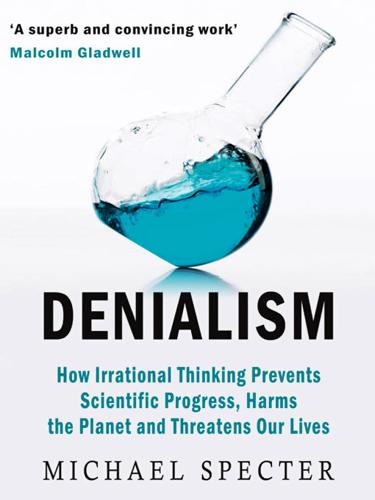
Denialism: How Irrational Thinking Hinders Scientific Progress, Harms the Planet, and Threatens Our Lives
by
Michael Specter
Published 14 Apr 2009
Just forty-six years later, a healthy fifty-year-old man can expect to live to the age of eighty. At least since the Enlightenment, when science effectively replaced religion as the dominant ideology of mankind, progress has been our purpose. We have moved from the discovery of the compass (and our sense of where we are in the physical world) to the invention of gunpowder, to the astonishing ability to take pictures that see through human flesh—only to arrive at the defining event of the twentieth century: the splitting of the atom. As Manhattan Project scientists gathered in New Mexico on July 16, 1945, to await results from the first test of the atomic bomb, they were anxious and afraid.
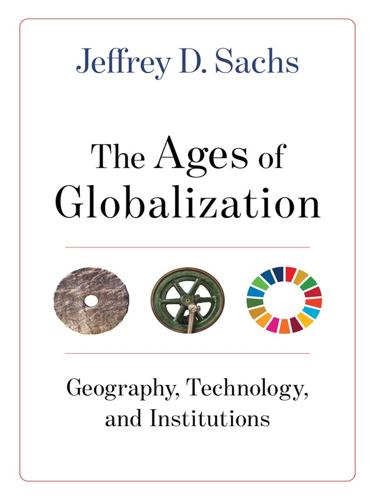
The Ages of Globalization
by
Jeffrey D. Sachs
Published 2 Jun 2020
The Macedonian phalanx was empowered by the innovation of the sarissa, the long spear, giving Alexander a decisive advantage in his Asian conquests. Greek and Roman oar-powered galleys were effective battering rams against opposing navies. The steppe-region archers sweeping in on horseback landed decisive blows on opposing infantries. China’s invention of gunpowder gave rise, centuries later, to the musket and other firearms that, in turn, decisively ended the advantages of the archers. The cannon artillery enabled by gunpowder helped to account for the spectacular successes of the Ottoman, Mongol, and Timurid empires. When the Atlantic powers, including the Spanish, Portuguese, Dutch, and English, successfully added cannon power to their ocean vessels, they were able to dominate the Indian Ocean trade routes.
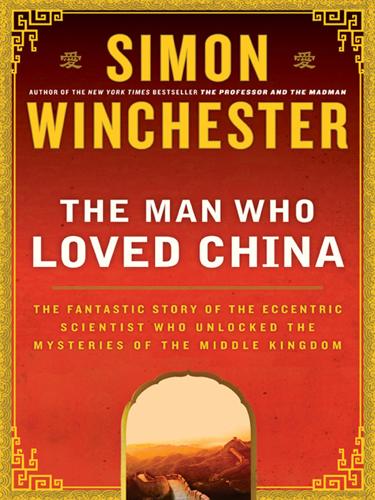
The Man Who Loved China: The Fantastic Story of the Eccentric Scientist Who Unlocked the Mysteries of the Middle Kingdom
by
Simon Winchester
Published 1 Jan 2008
My numerous inquiries about the History of Science problems caused a general stir and various members of the Institute were running about digging out interesting stuff they’d come across, e.g. passages about firecrackers in 2nd century AD; accounts of great explosions; and decrees forbidding the sale of gunpowder to the Tartars in AD 1076, i.e. two centuries before Berthold Schwartz’s alleged original discovery in the west. His search for the Chinese origin of just about everything—the central obsession of his life, as both critics and admirers would later say—had thus been rewarded by this one visit to a small Yangzi-side town in central Sichuan. The Chinese invention of gunpowder was far older, he now suspected, than had hitherto been assumed. The second reason for the importance of the visit to Lizhuang was his discovery of a remarkable man, a chemist named Wang Ling. Wang had come to the impromptu lecture Needham had given on the history of Chinese science—and without waiting to be asked, he immediately set about “digging out interesting stuff” for the visitor.

Shadow of the Silk Road
by
Colin Thubron
Published 1 Jan 2006
The heavy stirrup was a Chinese brain-child as early as the fourth century AD, it seems, and as it travelled westward, stabilising its rider in battle, it made possible the heavily armoured and expensively mounted knight. To this simple invention some have attributed the onset of the whole feudal age in Europe; and seven centuries later the same era came to an end as its castles were pounded into submission by the Chinese invention of gunpowder. The birth and death of Europe’s Middle Ages, you might fancy, came along the Silk Road from the east. These imaginings followed me at will through the dim vaults of the Qin emperor. He himself lies a mile away beneath a 290-foot mound, where years before I had wandered alone. Now the Chinese tourist board had discovered it.

Enriching the Earth: Fritz Haber, Carl Bosch, and the Transformation of World Food Production
by
Vaclav Smil
Published 18 Dec 2000
Annual exports began rising rapidly after 1880: they surpassed 1 million tonnes in 1895, reached 1.33 Mt in 1900, and were nearly 2.5 Mt in 1913 (fig. 3.4; appendix G).18 Although foreign companies initially controlled most of the output (the British ones produced about 60% of all nitrates before the end of the century, and the Chilean stake became dominant only after 1915), a large share of nitrate profits had always remained in the country as taxes accounted for about half of the production cost.19 But not all of the imported NaNO3 went to replenish nitrogen in cultivated soils: the compound also became the richest known source of oxygen for use in explosives. Since the invention of gunpowder in the eleventh century, its main ingredient, KNO3, came either from relatively rare mineral deposits (the easiest ones to harvest Exports of Chilean nitrate (kt NaNO3 /year) New Sources of the Nutrient 47 10 3 10 2 10 1 10 0 1840 1860 1880 1900 1920 1940 Figure 3.4 Exports of Chilean nitrates, 1840–1940.

More Everything Forever: AI Overlords, Space Empires, and Silicon Valley's Crusade to Control the Fate of Humanity
by
Adam Becker
Published 14 Jun 2025
His list of biological milestones gives this away: rather than picking particularly important events in the evolution of all life on Earth, he’s mostly chosen milestones leading up to the evolution of humans, as if humans are the ultimate goal of evolution. (Evolution has no goal, as Kurzweil surely knows.) This kind of cherry-picking makes it easy to create the appearance of an exponential trend. The list of scientific and technological advances is also cherry-picked: among the many missing milestones are the invention of gunpowder in China in the ninth century, the development of Newtonian physics in the seventeenth century, the germ theory of disease, the periodic table of the elements, the railroad, and the telegraph. None of these fit the exponential pattern, and all of them were easy to find, because there are many time periods that have no representation whatsoever on Kurzweil’s list.i These omissions are unlikely to be deliberate, any more than the near total exclusion of technological or cultural developments outside of Eurasia.
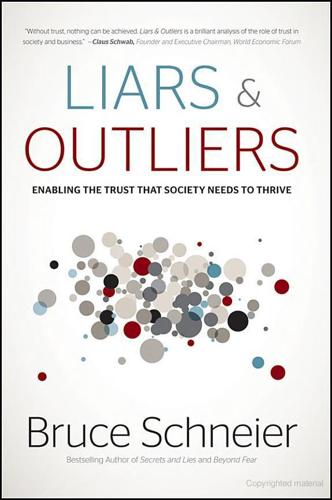
Liars and Outliers: How Security Holds Society Together
by
Bruce Schneier
Published 14 Feb 2012
Now that travel and communications are easy, there's probably a better system. Chapter 16 (1) It would be interesting to chart, as a function of historical time, how much damage an armed group of ten men could do in society before they were subdued. The amount would be pretty stable until the invention of gunpowder, and then would grow continuously until today. Future advances in chemical, nuclear, and biological weapon capabilities will increase that number even more in the future. (2) I don't mean to compare now with ten years ago, or even thirty years ago. I mean to compare it with 100 years ago, 500 years ago, and 1,000 years ago.
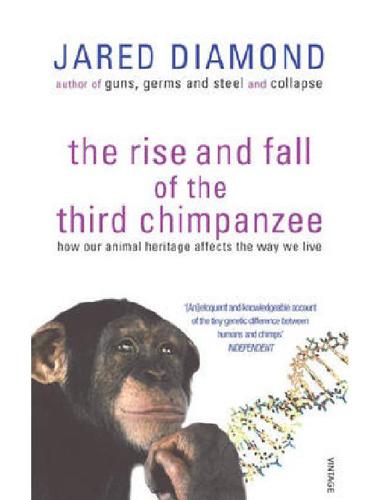
The Rise and Fall of the Third Chimpanzee
by
Jared Diamond
Published 2 Jan 1991
If so, why did it take so long after the Great Leap Forward for us to invent writing and build the Parthenon? The answer may be similar to the explanation why the Romans, great engineers that they were, didn't build atomic bombs. To reach the point of building an A-bomb required two thousand years of technological advances beyond Roman levels, such as the invention of gunpowder and calculus, the development of atomic theory, and the isolation of uranium. Similarly, writing and the Parthenon depended on tens of thousands of years of cumulative developments after the arrival of Cro-Magnons—developments that included the bow and arrow, pottery, domestication of plants and animals, and many others.

City: A Guidebook for the Urban Age
by
P. D. Smith
Published 19 Jun 2012
Remarkable Assyrian bas-reliefs survive, such as those in the British Museum in London, vividly depicting the first walled cities and the techniques used to besiege them: engineers tunnelling under walls to create cavities beneath the foundations which would be shored up with timber and then fired to bring about a catastrophic collapse; giant battering rams assaulting brazen gates; and infantry using flimsy ladders to scale ramparts.77 But before the invention of gunpowder (and unless you had a god on your side, as did the Israelites at Jericho), the advantage lay with the defenders. From the walls they dropped everything they could find on to attacking armies: boiling liquids, pots of scorpions and even beehives.78 The stakes were high: if the walls were breached, no mercy was shown to the defenders.

The Blood of Heroes: The 13-Day Struggle for the Alamo--And the Sacrifice That Forged a Nation
by
James Donovan
Published 14 May 2012
An attacking force would begin investment of the defensive position—surrounding the target and blocking the escape of troops and the ingress of reinforcements, provisions, and supplies—and then employ any combination of well-proven methods to reduce the fortifications and destroy the defenders. Siege machinery was one option; that meant cannon, primarily, since the invention of gunpowder had allowed artillery to replace more primitive weapons, such as catapults and trebuchets. Mining, or sapping, was another option; this meant that the attackers would dig tunnels right up to the walls and place explosive charges under them. The besieging force could then use the trenches to move men and machines gradually closer to the besieged position.

Mycelium Running: How Mushrooms Can Help Save the World
by
Paul Stamets
Published 14 Apr 2005
As our prehistoric ancestors migrated from Africa into European birch forests, their possession of this knowledge ensured their survival. The fire keepers of the clan, in a position of enormous importance for the clan’s survival, knew how to find and prepare these mushrooms. Now, this nearly lost art has been rediscovered. With invention of gunpowder by the Chinese and flint-spark guns by the Europeans (whose projectiles pierced body armor), demand for F. fomentarius soared, since it was the best source of punk, a preparation used to ignite gunpowder in primitive weapons. The fact that wood conk mushrooms helped in the development of warfare is another peculiar twist in the interactions of fungi and humans.

The Battle for Jerusalem, June 5-7, 1967
by
Abraham Rabinovich
Published 1 Jan 1987
Except for some lower courses dating from before the birth of Jesus, the wall was not very old by Middle Eastern standards. It had been built by the Turks 400 years before on the ruins of ancient battlements. Although Renaissance European cities of the same time were built with walls suitable for defense against cannon, Jerusalem’s was a medieval construction that hardly acknowledged the invention of gunpowder. Instead of cannon redoubts, it had firing slits for crossbows, for the wall was intended only to keep out bedouin raiders. The isolation of the city had served to spare it any more serious assault until Israel’s War of Independence. The Jordanians since then had lined the ramparts facing Jewish Jerusalem with pillboxes and filled in the tall arrow slits with concrete, leaving only small firing holes.
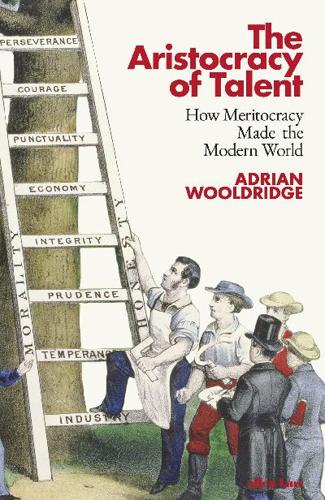
The Aristocracy of Talent: How Meritocracy Made the Modern World
by
Adrian Wooldridge
Published 2 Jun 2021
He clarified the distinction between the two types of aristocrats in a letter to John Adams on 28 October 1813: I agree with you that there is a natural aristocracy among men. The grounds of this are virtue and talents. Formerly, bodily powers gave place among the aristoi [aristocrats]. But since the invention of gunpowder has armed the weak as well as the strong with missile death, bodily strength, like beauty, good humor, politeness, and other accomplishments, has become but an auxiliary ground of distinction. There is also an artificial aristocracy, founded on wealth and birth, without either virtue or talents; for with these it would belong to the first class.
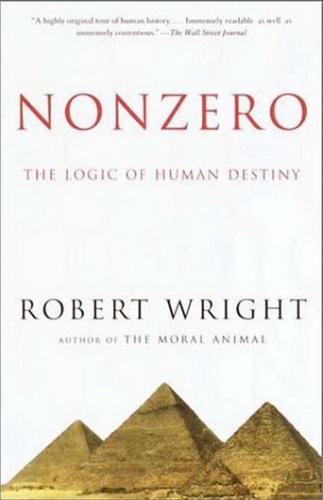
The Moral Animal: Evolutionary Psychology and Everyday Life
by
Robert Wright
Published 1 Jan 1994
Secession movements usually inspire resistance—which, in turn, usually empower militants within the secession. So things could get messy in a lot of places fairly fast—a classic “transitional instability.” Making things even messier is Inevitability Number Two: the growing power, compactness, and accessibility of lethal technologies. This trend dates back to the invention of gunpowder and has now gone beyond chemistry, into nuclear physics and biotechnology. Meanwhile, knowledge of how to harness the new lethal forces is rendered ever more available by ever-subtler information technologies. It seems likely that, for some time to come, more and more people will have the option of committing atrocities of greater and greater severity.
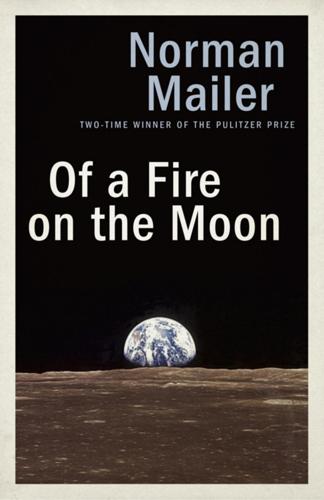
Of a Fire on the Moon
by
Norman Mailer
Published 2 Jun 2014
The Eagle has a computer pregnant with alarm. There is no way to avoid the difficulty. We must dip into a disquisition on the property of computers, or we will comprehend nothing of the melodrama which follows. IV Consider a list which includes the discovery of the wheel, the extraction of iron from earth, the invention of gunpowder and the printing press, the steam engine, the power loom, the electric generator and the internal combustion engine. The names of Christ, Mohammed and Buddha; of Augustine and Luther; Darwin, Marx and Freud. We may as well recognize what is common; it is the power of the man or of the invention to create other inventions, other styles of life, not even conceived in the origin.
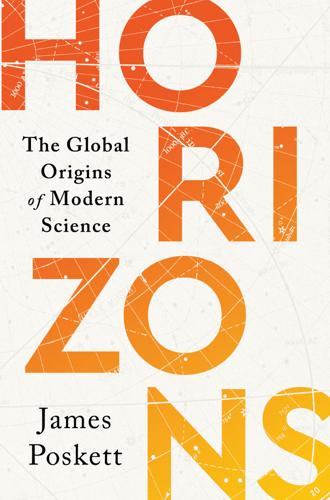
Horizons: The Global Origins of Modern Science
by
James Poskett
Published 22 Mar 2022
Throughout the ceremony, a television audience of over one billion watched as China showcased its other ancient scientific achievements, including the compass. Fittingly, the ceremony closed with a spectacular display of another Chinese discovery. Fireworks lit up the sky above the Bird’s Nest Stadium, a nod towards the invention of gunpowder during the Song dynasty. Yet throughout the ceremony, there was very little reference to the many scientific breakthroughs that China has contributed to since then, such as the development of natural history in the eighteenth century or quantum mechanics in the twentieth century. The same is true of the Middle East.
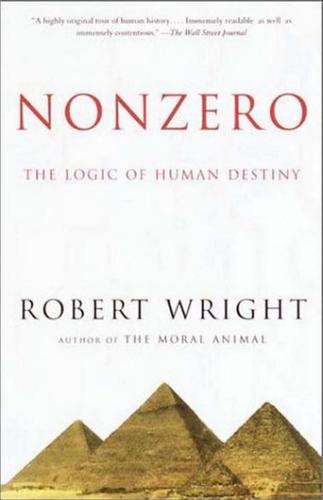
Nonzero: The Logic of Human Destiny
by
Robert Wright
Published 28 Dec 2010
Secession movements usually inspire resistance—which, in turn, usually empower militants within the secession. So things could get messy in a lot of places fairly fast—a classic “transitional instability.” Making things even messier is Inevitability Number Two: the growing power, compactness, and accessibility of lethal technologies. This trend dates back to the invention of gunpowder and has now gone beyond chemistry, into nuclear physics and biotechnology. Meanwhile, knowledge of how to harness the new lethal forces is rendered ever more available by ever-subtler information technologies. It seems likely that, for some time to come, more and more people will have the option of committing atrocities of greater and greater severity.

Strolling Through Istanbul
by
Sumner-Boyd, Hilary.; Freely, John
Published 8 Jan 2011
Beyond this was an outer terrace called the parateichion, bounded on the outside by the counter-scarp of the moat which was a battlement nearly two metres high. The moat itself was originally about ten metres deep and 20 metres wide, and may have been flooded whenever the city was threatened. All-in-all it was a most formidable system of fortification – perhaps the most elaborate and unassailable ever devised. Had it not been for the invention of gunpowder and cannons these walls might never have been breached. Most of the inner defence-wall and nearly all of its huge towers are still standing, although sieges, earthquakes and the ravages of time Strolling Through Istanbul TEXT.indd 338 25/6/09 13:43:59 Along the Land Walls 339 have left their scars.
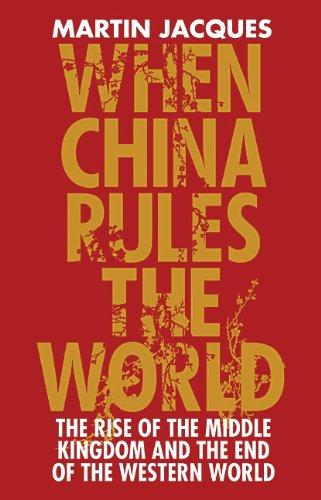
When China Rules the World: The End of the Western World and the Rise of the Middle Kingdom
by
Martin Jacques
Published 12 Nov 2009
Encouraged by the government, there was a flowering of learning and a wave of remarkable inventions during the Song dynasty, especially in the century and a half of the Northern Song (960-1126).17 What is sometimes described as China’s Renaissance witnessed the development of a classical examination system, the birth of neo-Confucianism, the invention of gunpowder, mortars and woodblock printing, the spread of books, and major advances in mathematics, natural sciences, astronomy and geography.18 A large spinning machine was invented that was to fall only slightly short of what might - at least theoretically - have ushered in an industrial revolution along the lines that Britain was to experience centuries later.19 In contrast, Europe’s Renaissance only began two centuries after the end of the Northern Song.
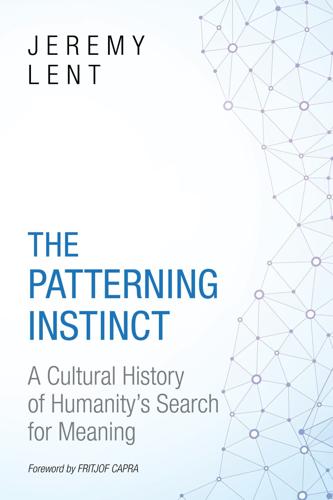
The Patterning Instinct: A Cultural History of Humanity's Search for Meaning
by
Jeremy Lent
Published 22 May 2017
Finally, the use of technology was quite acceptable as a way of enhancing civilized life, but, with no conception of humanity's separation from nature, the idea of “conquering nature” was unthinkable. With this cognitive structure, even the most potentially disruptive forces, such as the invention of gunpowder or the invasion of the Mongols, could be subsumed and incorporated into the social fabric. During the Song dynasty, when Chinese civilization was at a peak of creative flux, the most brilliant minds were focused not on achieving a disruptive break with the past but on synthesizing their three major philosophical traditions into Neo-Confucianism.

Wired for War: The Robotics Revolution and Conflict in the 21st Century
by
P. W. Singer
Published 1 Jan 2010
The fact is, however, that while technology may not have ended the warrior’s trade, it certainly has affected our definition of the attributes soldiers must have when they go to war, most especially that ultimate value that so defines a soldier, courage in the face of danger. In the days of swordplay, individual ferocity often carried the day in battle (think Mel Gibson in Braveheart), and so it was an attribute that was greatly admired. With the invention of gunpowder and forces lining up in battle to fight each other, the ultimate value became steadfastness under fire; courage now meant standing in the line with “passive disdain,” as bullets came flying at you (think Mel Gibson in The Patriot). But when the machine gun entered war, this old definition of courage became ineffective if not insane (think Mel Gibson in Lethal Weapon, or on a Malibu highway).

Memoirs of Extraordinary Popular Delusions and the Madness of Crowds - the Original Classic Edition
by
Charles MacKay
Published 14 Jun 2012
Those who are curious to see the manner in which these combats were regulated, may consult the learned Montesquieu, where they will find a copious summary of the code of ancient duelling. 118* Truly does he remark, in speaking of the clearness and excellence of the arrangements, that, as there were many wise matters which were conducted in a very foolish manner, so there were many foolish matters conducted very wisely. No greater exemplification of it could be given, than the wise and religious rules of the absurd and blasphemous trial by battle. In the ages that intervened between the Crusades and the new era that was opened out by the invention of gunpowder and printing, a more rational system of legislation took root. The inhabitants of cities, engaged in the pursuits of trade and industry, were content to acquiesce in the decisions of their judges and magistrates whenever any differences arose among them. Unlike the class above them, their habits and manners did not lead them to seek the battle-field on every slight occasion.

Seven Pillars of Wisdom
by
T. E. Lawrence
Published 29 Mar 2000
Saxe had told us that irrational battles were the refuges of fools: rather they seemed to me impositions on the side which believed itself weaker, hazards made unavoidable either by lack of land room or by the need to defend a material property dearer than the lives of soldiers. We had nothing material to lose, so our best line was to defend nothing and to shoot nothing. Our cards were speed and time, not hitting power. The invention of bully beef had profited us more than the invention of gunpowder, but gave us strategical, rather than tactical strength, since in Arabia range was more than force, space greater than the power of armies. I had now been eight days lying in this remote tent, keeping my ideas general,* till my brain, sick of unsupported thinking, had to be dragged to its work by an effort of will, and went off into a doze whenever that effort was relaxed.
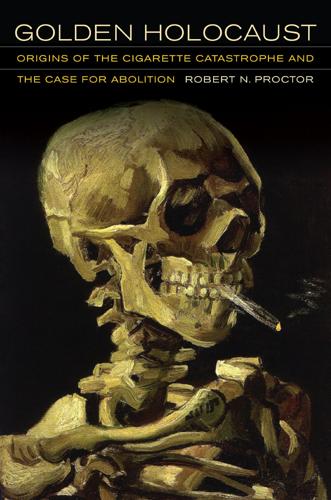
Golden Holocaust: Origins of the Cigarette Catastrophe and the Case for Abolition
by
Robert N. Proctor
Published 28 Feb 2012
Many of these same techniques were being used as late as the eighteenth century, when starting and keeping the home fires burning was a vital necessity throughout the world. In England, stories were told of homes where fires had been kept alive for more than a hundred years. Chemical means of kindling fires have been around for centuries, though elaborate preparation was sometimes necessary, and techniques were not always reliable. China’s invention of gunpowder in the ninth century made it possible to make a fire by impact, but this was never very practical. The British philosopher Robert Boyle, better known for his invention of the air pump, by 1689 had found that phosphorus rubbed against sulfur could cause ignition, but there was not yet any good means of controlling the combustion.